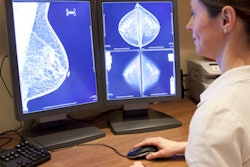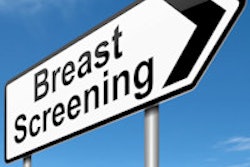
Recall visits prompted by false-positive mammograms cost women money -- up to $450 for those who also undergo biopsies, according to a new study published in the Journal of Women's Health. Recalls also cost women in less quantifiable ways, such as time lost at work and anxiety.
"Following a finding on a screening mammogram, the use of further diagnostic processes to investigate an inconclusive screening result impacts patients unequally," wrote lead author Matthew Alcusky and colleagues. "Adverse physical or psychological effects experienced by some patients as a result of a false positive may amplify the burden."
Alcusky is from the Jefferson School of Population Health at Thomas Jefferson University in Philadelphia, while other researchers on the study are from Yale University School of Medicine and Truven Health Analytics of Brentwood, NH.
Who decides?
The study may address an ongoing concern that mammography's harms -- such as false positives, overdiagnosis, and patient anxiety -- outweigh its benefits. But who decides if false positives are unnecessary or harmful? It's up to the woman and her doctor, Alcusky told AuntMinnie.com via email.
"The decision to undergo breast cancer screening with mammography and the reasons for a woman's decision to be screened vary from person to person," he said. "Clinicians should be having a discussion with each of their patients about the risks and benefits of screening."
The researchers used the Truven Health MarketScan Commercial and Medicare Supplemental Database to identify women between the ages of 40 and 75 who underwent screening mammography between January 2011 and June 2013. The women were all covered by insurance through their employers; health plans ranged from fee for service to fully capitated and partially capitated plans (J Womens Health, September 2014, Vol. 23:S1, pp. S11-S19).
"Recall" was defined as a woman returning for diagnostic mammography or breast ultrasound in the six months following her first screening mammogram during the study period. Recalls were deemed unnecessary in the absence of a diagnosis of breast cancer in the six months following the screening mammogram.
The study sample included 1.7 million women, of whom 15% (259,028) were recalled. The majority of the women in the total study sample were between 50 and 64. The group calculated patients' out-of-pocket charges by adding any fees for breast-related diagnostic services. Breast cancer treatment costs, patient insurance premiums, and costs paid by the health plan were not included in this calculation. The researchers also did not include patient expenses such as time off work, child care, or transportation.
Alcusky's group found that the recall rate was highest in women between 40 and 49 years of age (17.9%). As for geography, the highest recall rates were in the Northeast and Mid-Atlantic states (21.2% and 19.7%, respectively). Women with exclusive provider organization (EPO) plans had the highest recall rates (20.6%), compared with those who had other healthcare coverage arrangements.
Calculating mean total patient costs, Alcusky and colleagues found that women with out-of-pocket fees paid 49.8% more than patients who had no additional costs.
| Total patient costs | |
| Mean total patient cost for all recalled (patients with no additional costs and those with out-of-pocket costs) | $137.98 |
| Mean total patient cost among patients with out-of-pocket costs | $206.71 |
| Average cost among patients who underwent biopsy | $448.65 |
As for the imaging modalities used for recall visits, diagnostic mammography was the most common, at 80.1%, followed by ultrasound at 65.7%. Image-guided biopsy and open biopsy had the highest mean procedure costs, at $351 and $252, respectively. Image-guided biopsy accounted for the largest amount of total recall costs, at 29.9%, despite the fact that it was only used in 11.8% of recalled patients, while open biopsy accounted for only 2.4% of total recall costs.
Time is money
The researchers also found that a third of the recalled population in the study had to spend multiple days with a recall-related procedure, which may have translated into multiple days of costs and opportunity costs for the patient and any companion.
"Recalls involve physician's visits and imaging appointments, which a patient attends as part of the diagnostic process, which incurs time spent traveling, attending, and scheduling these activities and could also consist of lost time from other activities such as work or caring for family," Alcusky told AuntMinnie.com.
Reducing recalls
The national recall rate in the U.S. is above the recommended performance benchmark of 10% and more than double rates reported in the U.K., according to the researchers. The estimated national cost of screening mammography in 2010 was $6.2 billion; recall costs (imaging and biopsies from true and false positives) were an additional $1.6 billion.
Alcusky and colleagues listed a number of approaches that have been suggested to reduce screening mammography recall rates, including using double readings and/or adhering to the U.S. Preventive Services Task Force's 2009 recommendation for decreased screening frequency -- therefore reducing recalls. Digital breast tomosynthesis is a promising technology for recall reduction, according to the researchers: Clinical studies have shown that the recall rate per 1,000 screens was 15% less for patients screened with tomosynthesis versus digital mammography.
"Direct and indirect cost savings from reduced recall with breast tomosynthesis would be expected to reduce the patient burden," Alcusky's group wrote.
Study disclosures
Contributing study author Machaon Bonafede, PhD, is an employee of Truven Health Analytics, which received a research contract from Hologic to conduct the study. Hologic did not directly remunerate Bonafede.




















